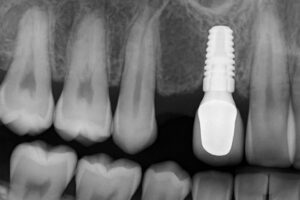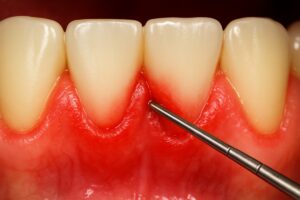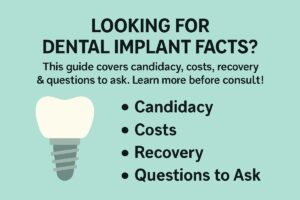A loose tooth can feel alarming in an adult. It means the tooth moves more than it should inside its socket. While kids naturally lose baby teeth, adult tooth looseness is a sign something else is happening. The loose tooth medical term is “tooth mobility” (also called dental mobility). Knowing this term helps you describe the problem clearly to your dentist and get the right care fast.
What Is The Loose Tooth Medical Term?
Tooth mobility, or dental mobility, describes unwanted movement of a tooth. Dentists grade mobility: Grade 1 = slight movement (less than 1 mm), Grade 2 = moderate (1–2 mm), Grade 3 = severe (more than 2 mm or vertical movement). Baby teeth normally loosen before falling out; adult tooth mobility is not normal and often signals gum disease, injury, or other health issues.
How Dentists Measure Tooth Mobility
Simple clinical test
A dentist or hygienist gently holds the tooth between two instruments or fingers and pushes it back and forth to check movement. They note the direction and amount of movement and assign a grade. This quick test helps track changes over time.
Why X‑rays and charting matter
X‑rays reveal bone loss around the tooth root, root fractures, or other hidden problems. Periodontal charting measures pocket depths and gum attachment levels. Together, these records show whether gum disease or bone loss is causing the mobility.
Common Causes Of A Loose Tooth
Gum disease (periodontitis)
Infection from periodontitis destroys the bone and tissue that support teeth. As bone is lost, teeth become loose.
Trauma and accidents
A blow to the mouth, fall, or hard impact can displace or loosen a tooth immediately.
Occlusal problems and bruxism
High bites, uneven forces, or chronic grinding (bruxism) place stress on teeth and can cause gradual mobility.
Systemic factors
Conditions like diabetes, osteoporosis, and certain medications (e.g., some antiresorptives) can weaken bone and increase the risk of loose teeth.
Pregnancy and hormonal changes
Pregnancy can cause temporary gum inflammation and looseness due to hormone shifts; it usually improves after delivery with good care.
When A Loose Tooth Is An Emergency
Seek urgent care if you have severe pain, spreading facial swelling, fever, uncontrolled bleeding, trouble breathing, or a tooth that’s nearly out. Sudden looseness after trauma also needs prompt evaluation. Avoid wiggling the tooth and get emergency dental or medical care if swelling or breathing problems occur.
Immediate At‑Home Steps Before You See A Dentist
Eat soft foods, avoid touching or wiggling the tooth, and rinse gently with warm salt water to keep the area clean. If a tooth is completely knocked out, keep it moist — place it in milk or saline and get to a dentist quickly. Do not force a loose tooth back into place.
Treatment Options Your Dentist May Recommend
Non‑surgical periodontal therapy
Deep cleaning (scaling and root planing) removes infection and can help tissues reattach, reducing mobility in early cases.
Splinting and bite adjustment
A dentist may splint loose teeth to neighbors for temporary stability and adjust high bites to remove excess force.
Surgical and regenerative options
When bone is lost, bone grafting, guided tissue regeneration, or other surgical techniques aim to rebuild support. If a tooth can’t be saved, extraction may be necessary.
Tooth replacement choices
After extraction, options include bridges, removable dentures, or dental implants to restore function and prevent shifting.
When To See A Periodontist — What To Expect
See a periodontist for advanced bone loss, failed previous treatment, or complex planning. A board‑certified periodontist like Dr. Keith Chertok, DDS evaluates mobility with digital X‑rays, periodontal charting, and oral DNA testing, then recommends advanced or minimally invasive options such as laser therapy, grafting, or implant planning when appropriate.
Preventing Future Loose Teeth
Brush twice daily, floss, attend regular cleanings, wear a night guard for grinding, control systemic conditions like diabetes, and quit smoking. Early care for gum disease greatly lowers the risk of losing teeth.
Closing / Call To Action
If you notice new or worsening tooth mobility, book an exam soon. Seek urgent care for severe pain, swelling, or breathing trouble. Early diagnosis and treatment improve the chance of saving the tooth.






